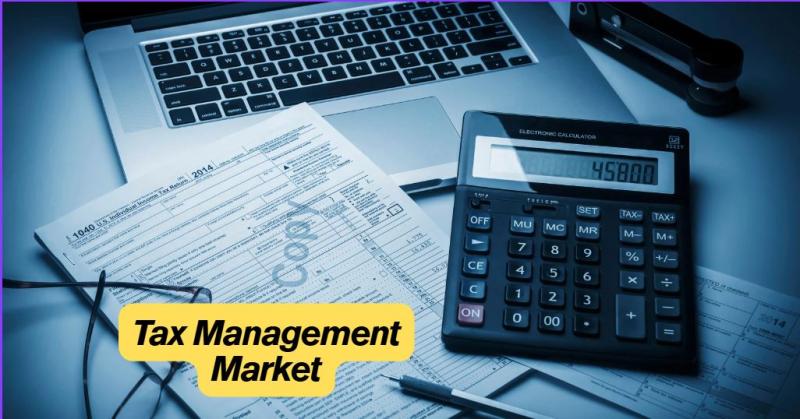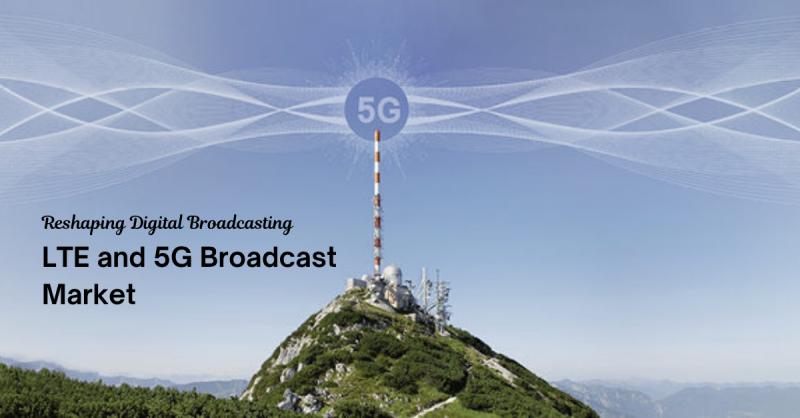Press release
LTE and 5G Broadcast Market Growth Analysis and Future Trends 2025- 2032
Market OverviewThe LTE and 5G Broadcast market is gaining strong momentum, revolutionizing how content is delivered to mass audiences. With the market valued at USD 842.4 million in 2024 and projected to reach USD 1,741.3 million by 2032 at a robust CAGR of 9.5%, the technology is emerging as a vital solution for next-generation broadcasting needs. Unlike traditional content delivery methods, LTE and 5G broadcasting enable operators to distribute the same content to millions of users simultaneously without network congestion. This capability makes it ideal for live events, public safety communication, and large-scale entertainment services.
The rise in mobile video consumption, driven by affordable data plans and increased smartphone penetration, is fueling this demand globally. Media and entertainment companies are adopting LTE and 5G broadcasts to enhance viewer experience, while transportation and public safety sectors are exploring it for real-time communication. Furthermore, 5G's advanced features, including ultra-low latency and high bandwidth, are redefining broadcast efficiency and interactivity. Governments are also actively supporting digital infrastructure development, creating a favorable ecosystem for this market's growth. As AI and cloud-based tools integrate with LTE and 5G broadcasting, personalized and immersive content experiences are set to dominate the future of broadcasting.
Browse the report and understand how it can benefit your business strategy - https://www.credenceresearch.com/report/lte-and-5g-broadcast-market
Market Drivers
Increasing Demand for Interactive Entertainment
Consumers are moving beyond passive viewing, seeking interactive entertainment experiences. Live sports, gaming tournaments, and concerts are increasingly broadcast with multi-camera angles, polls, and live chats, making interactivity a key driver. LTE and 5G broadcasting provide the necessary bandwidth and speed to support these interactive elements without compromising video quality. Broadcasters are capitalizing on this trend to increase audience engagement and retention. Additionally, OTT platforms are introducing premium services using broadcast technology to differentiate themselves in a highly competitive market.
Government Support and Digital Transformation Initiatives
Several governments worldwide are promoting 5G infrastructure development as part of their digital transformation strategies. These initiatives include favorable spectrum policies, financial incentives, and public-private partnerships, which are accelerating the deployment of LTE and 5G broadcasting. Countries such as China, the U.S., and South Korea are setting benchmarks for large-scale adoption by integrating broadcasting into public safety and educational services. Smart city projects are also leveraging these technologies to deliver real-time updates and emergency alerts to urban populations, creating a strong growth environment.
Growing Content Monetization Opportunities
Broadcasters are discovering new revenue streams through LTE and 5G broadcasts. The ability to deliver high-quality content to millions simultaneously opens doors for pay-per-view models, targeted advertising, and premium subscription services. Sports leagues and event organizers are forming partnerships with telecom operators to stream live content globally, expanding their audience reach. The increasing willingness of consumers to pay for exclusive, high-quality live content is further boosting revenue potential. This commercial viability is encouraging more players to invest in broadcasting infrastructure.
Expansion of Smart Devices and IoT Ecosystems
The widespread availability of 5G-enabled smartphones, smart TVs, and connected devices is driving the adoption of LTE and 5G broadcasting. Device manufacturers are now prioritizing compatibility with advanced broadcast technologies to meet consumer expectations for seamless streaming. The growth of IoT ecosystems, particularly in smart homes and connected vehicles, is also fueling demand. Real-time infotainment, navigation updates, and emergency communications in connected environments are creating new use cases for LTE and 5G broadcasts, reinforcing their market potential.
Market Challenges
High Capital Investment Requirements
Deploying LTE and 5G broadcasting infrastructure involves substantial financial investment. Telecom operators need to upgrade base stations, acquire spectrum, and invest in high-performance servers, which can be a barrier for smaller players. The return on investment takes time, making some operators hesitant to commit fully. Developing regions face additional hurdles due to limited financial resources and lack of supportive policies, slowing overall market penetration.
Inconsistent Global Spectrum Policies
Spectrum allocation remains a complex issue, with regulations varying widely across countries. Delays in spectrum licensing and high acquisition costs make it difficult for operators to expand services uniformly. The lack of harmonized international policies also creates interoperability challenges for broadcasters looking to deliver cross-border services. These regulatory barriers continue to restrict the pace of adoption in certain regions.
Limited Awareness Among End Users
Despite the technological benefits, many consumers remain unaware of LTE and 5G broadcast capabilities. Traditional unicast streaming still dominates user preferences due to familiarity and lack of marketing about advanced broadcasting services. Service providers need to invest in consumer education and promotional campaigns to increase awareness and encourage adoption. Until this gap is addressed, market growth will remain slower than expected in some areas.
Potential Security Vulnerabilities
The shift to advanced broadcast technologies increases the risk of cyberattacks targeting content delivery networks. Unauthorized access, service disruptions, and data breaches are major concerns for operators. Securing large-scale broadcast networks requires advanced encryption and real-time monitoring, which further increases operational costs. Small operators, in particular, struggle to meet these security demands, limiting their ability to compete effectively in the market.
Market Opportunity
Expansion into Educational and Corporate Training Sectors
The growing demand for remote education and corporate training programs presents a major opportunity for LTE and 5G broadcasting. Institutions can deliver lectures, workshops, and training modules to thousands simultaneously without straining networks. This technology ensures consistent video quality, making it an attractive option for e-learning platforms and multinational corporations looking to scale training operations globally.
Growth of Virtual Reality (VR) and Augmented Reality (AR) Broadcasting
The increasing popularity of VR and AR applications opens new possibilities for broadcasters. LTE and 5G broadcasting can deliver immersive, high-resolution experiences required for VR-based events, virtual tourism, and remote healthcare consultations. Event organizers are exploring AR overlays for sports and entertainment to enhance audience interaction, creating innovative revenue streams.
Adoption in Public Transport and Autonomous Vehicles
Public transport systems and autonomous vehicles are emerging as significant consumers of broadcast technology. Real-time infotainment, emergency updates, and navigation assistance can be delivered efficiently through LTE and 5G broadcasting. Partnerships between telecom operators and automotive companies are accelerating the integration of these technologies into connected vehicles, providing new growth avenues.
Rapid Digitalization in Emerging Economies
Emerging markets in Asia Pacific, Latin America, and Africa are witnessing rapid digital transformation. Increasing smartphone penetration, government-driven 5G initiatives, and affordable internet packages are encouraging adoption. Local broadcasters are partnering with global operators to expand their reach, while demand for live sports and entertainment is growing significantly in these regions.
Market Segmentation
By Technology
• LTE Broadcast
• 5G Broadcast
• Dynamic Adaptive Streaming
By Application
• Video Streaming
• Live Events Broadcasting
• Content Distribution
By End Use
• Telecommunications
• Media & Entertainment
• Transportation
By Deployment Type
• Cloud-Based
• On-Premises
• Hybrid
By Geography
• North America: U.S., Canada, Mexico
• Europe: UK, France, Germany, Italy, Spain, Russia, Belgium, Netherlands, Austria, Sweden, Poland, Denmark, Switzerland, Rest of Europe
• Asia Pacific: China, Japan, South Korea, India, Thailand, Indonesia, Vietnam, Malaysia, Philippines, Taiwan, Rest of Asia Pacific
• Latin America: Brazil, Argentina, Peru, Chile, Colombia, Rest of Latin America
• Middle East & Africa: GCC Countries, South Africa, Rest of the Middle East and Africa
Regional Analysis
North America
North America leads the global LTE and 5G broadcast market, supported by advanced telecom infrastructure and early adoption of 5G technology. The U.S. dominates due to strong investments by major telecom operators and growing demand for premium streaming services. Canada is focusing on expanding live event broadcasting, while Mexico is gradually increasing its adoption through government-led digital initiatives. High consumer spending on OTT platforms and widespread device compatibility ensure steady growth in this region. Collaborations between broadcasters and technology providers continue to drive innovation and expand service offerings.
Europe
Europe shows consistent growth, with regulatory support and increasing adoption of 5G infrastructure. Germany, the UK, and France are at the forefront of implementing broadcast technologies for sports, entertainment, and public safety. Partnerships between telecom operators and media companies are enabling cost-effective broadcasting solutions. Eastern European countries are catching up, driven by government-backed digitalization efforts. Rising demand for interactive content is further fueling the adoption of LTE and 5G broadcasting across the region.
Asia Pacific
Asia Pacific is experiencing the fastest growth due to strong investments in digital infrastructure and increasing smartphone penetration. China and South Korea are leading in large-scale 5G deployment, while Japan focuses on enhancing live sports broadcasts with immersive technologies. India is rapidly emerging as a key market with its affordable data plans and government-led digital campaigns. Local device manufacturers are introducing cost-effective products, making advanced broadcasting accessible to wider audiences.
Latin America
Latin America is gradually adopting LTE and 5G broadcasting, with Brazil and Mexico leading the way. Sports broadcasting, particularly football, is driving demand for high-quality live streaming services. Telecom partnerships and the growing popularity of affordable smartphones are expanding adoption. Government initiatives aimed at upgrading telecom networks are also contributing to regional growth, though infrastructure challenges still remain in rural areas.
Middle East & Africa
The Middle East & Africa region is showing significant potential, especially in GCC countries where smart city initiatives are integrating LTE and 5G broadcasting for public safety and urban management. South Africa is investing in digital infrastructure to enhance content distribution and improve broadcasting reach. The increasing youth population and rising demand for video-on-demand services are driving adoption. Governments are actively supporting telecom modernization, making the region a promising growth market despite existing infrastructure limitations.
Top Companies
• Mavenir
• SK Telecom Co. Ltd.
• Qualcomm
• Intel
• China Mobile
• Broadcom
• KT Corporation
• Cisco
• ZTE
• Samsung Electronics
• Nokia
• Verizon Wireless
• Huawei Technologies Co. Ltd.
• AT&T Inc.
• Ericsson
Recent Developments
• In June 2025, China Unicom targeted seamless 5G-Advanced with multicast across
300 cities for UHD tourism streaming and logistics tracking.
• In April 2025, Verizon Business unveiled an AI-driven private 5G broadcast suite at
NAB 2025, integrating C-band, CBRS, and mmWave.
• In April 2025, Nokia secured a multi-year T-Mobile US RAN deal to expand
nationwide broadcast capability.
• In March 2025, China Mobile launched the first commercial 5G-Advanced broadcast
service across 100 cities, expecting 300 by year-end.
• In March 2025, FirstNet Authority and AT&T committed over USD 8 billion to
transform public-safety broadband with full 5G multicast.
• In December 2024, Nokia introduced the 5G Banshee Flex Radio to deliver secure
battlefield connectivity. It was developed to combine multiple networking
technologies into one platform. The device offered 5G speeds using 100MHz
carriers and supported dual private 5G/LTE bands to ensure secure and reliable
communication for military operations.
• In October 2024, NEC and Cisco collaboratively launched a new private 5G network
solution for customers. The system included Cisco's 5G SA Core and Cloud Control
Centre, integrated with NEC's validated radio network and system services. By
combining the wireless expertise with Cisco's core network capabilities, the
company aimed to support and maintain private 5G networks for enterprises,
beginning with deployments across Europe and the Middle East.
Reasons to Purchase this Report:
• Gain in-depth insights into the market through both qualitative and quantitative analyses, incorporating economic and non-economic factors, with detailed segmentation and sub-segmentation by market value (USD Billion).
• Identify the fastest-growing regions and leading segments through analysis of geographic consumption trends and the key drivers or restraints affecting each market.
• Track the competitive landscape with updated rankings, recent product launches, strategic partnerships, business expansions, and acquisitions over the past five years.
• Access comprehensive profiles of key players, featuring company overviews, strategic insights, product benchmarking, and SWOT analyses to assess market positioning and competitive advantages.
• Explore current and projected market trends, including growth opportunities, key drivers, challenges, and limitations across developed and emerging economies.
• Leverage Porter's Five Forces analysis and Value Chain insights to evaluate competitive dynamics and market structure.
• Understand how the market is evolving and uncover future growth opportunities and emerging trends shaping the industry.
Related Reports -
5G Infrastructure ASIC Market- https://www.credenceresearch.com/report/5g-infrastructure-asic-market
5G Infrastructure Market- https://www.credenceresearch.com/report/5g-infrastructure-market
5G in Defense Market- https://www.credenceresearch.com/report/5g-in-defense-market
5G Edge Cloud Network and Services Market- https://www.credenceresearch.com/report/5g-edge-cloud-network-and-services-market
Preview the report with a detailed sample and understand how it can benefit your business strategy. Request a free sample today -
https://www.credenceresearch.com/report/lte-and-5g-broadcast-market
Tower C-1105 , S 25, Akash Tower,
Vishal Nahar, Pimple Nilakh, Haveli,
Pune - 411027, India
Credence Research is a viable intelligence and market research platform that provides quantitative B2B research to more than 2000 clients worldwide and is built on the Give principle. The company is a market research and consulting firm serving governments, non-legislative associations, non-profit organizations, and various organizations worldwide. We help our clients improve their execution in a lasting way and understand their most imperative objectives.
This release was published on openPR.
Permanent link to this press release:
Copy
Please set a link in the press area of your homepage to this press release on openPR. openPR disclaims liability for any content contained in this release.
You can edit or delete your press release LTE and 5G Broadcast Market Growth Analysis and Future Trends 2025- 2032 here
News-ID: 4113541 • Views: …
More Releases from Credence Research Inc.

Commercial Insurance Market to Reach USD 1,470,32 million by 2032, Growing at a …
Market Overview
The global commercial insurance market is undergoing a steady phase of growth, supported by increasing awareness of risk management and the rising complexity of global business operations. According to industry data, the Commercial Insurance Market size was valued at USD 922,502.5 million in 2024 and is anticipated to reach USD 1,470,32 million by 2032, at a CAGR of 6% during the forecast period. This significant growth projection highlights the…

Tax Management Market to Reach USD 36,756.61 million by 2032, Growing at a CAGR …
Market Overview
The Tax Management Market size was valued at USD 18,320.00 million in 2018, grew to USD 22,589.91 million in 2024, and is anticipated to reach USD 36,756.61 million by 2032, at a CAGR of 6.34% during the forecast period. This steady expansion highlights the market's increasing relevance as businesses and governments focus on regulatory compliance, efficient financial reporting, and technology-enabled tax solutions. Taxation plays a critical role in shaping…

Accounting and Budgeting Software Market to Reach USD 41,260.7 million by 2032, …
Market Overview
The Accounting and Budgeting Software Market size was valued at USD 20,860 million in 2024 and is anticipated to reach USD 41,260.7 million by 2032, at a CAGR of 8.9% during the forecast period (2024-2032). This consistent growth reflects the rising adoption of digital financial management solutions across industries. With businesses facing increasing pressure to enhance transparency, comply with regulations, and make data-driven decisions, accounting and budgeting software has…

Paper Straws Market to Reach USD 2977million by 2032, Growing at a CAGR of 8.1% …
Market Overview
The Paper Straws Market was valued at USD 1596.5 million in 2024 and is projected to reach USD 2977 million by 2032, growing at a CAGR of 8.1% during the forecast period. This consistent growth reflects the increasing global shift toward sustainable alternatives to plastic. As environmental concerns escalate and regulations tighten, paper straws have emerged as a viable substitute that meets both consumer expectations and government mandates. Their…
More Releases for LTE
LTE CPE Market the Falling Prices of LTE-Capable Devices
LTE CPE stands for Long Term Evolution Customer Premises Equipment. It is a type of customer premises equipment (CPE) that is used to connect to an LTE network. LTE CPE can be used for both home and business applications. LTE CPE typically includes an LTE modem, WiFi router, and LTE antenna.
LTE is the latest and greatest in wireless data technology, and LTE CPE devices are the customer-premise equipment (CPE) that…
Perle IRG5521 LTE Routers provide LTE coverage when WiFi is unavailable
When the power goes down, so does the WiFi. Cellular systems, however, keep working. A Case Study about Winning Strategies’ new stand-alone multi-power-source wireless surveillance system.
PRINCETON, N.J. (Mar. 30, 2021) Establishing a contingency plan to recover IT services after an emergency, or system disruption, is a critical step in the network design process. IT systems are vulnerable to a variety of interruptions that range from short-term power outages to severe…
2018-2025 LTE Communication Market analysis report with Leading players, Applica …
LTE Communication Market
The Global LTE Communication Market is defined by the presence of some of the leading competitors operating in the market, including the well-established players and new entrants, and the suppliers, vendors, and distributors. The report also analyzes the development proposals and the feasibility of new investments. The LTE Communication Market report has been collated in order to provide guidance and direction to the companies and individuals interested in buying this research report.
To Access PDF…
LTE-Advanced (LTE-A) Mobile Technologies Market 2017 Emerging Trends
This report studies the global LTE-Advanced (LTE-A) Mobile Technologies market, analyzes and researches the LTE-Advanced (LTE-A) Mobile Technologies development status and forecast in United States, EU, Japan, China, India and Southeast Asia. This report focuses on the top players in global market, like
Nokia Solutions and Networks
Alcatel-Lucent
EE Limited
Cisco
Ericsson
AT&T
SK Telecom
Royal KPN
Samsung
NTT Docomo
LG
Huawei
ZTE
For more information about this report at http://www.reportsweb.com/global-lte-advanced-lte-a-mobile-technologies-market-size-status-and-forecast-2022
Market segment by Regions/Countries, this report covers
United States
EU
Japan
China
India
Southeast Asia
Market segment by Type, LTE-Advanced…
Global LTE (LTE-FDD, TD-LTE and LTE Advanced) Market Analysis, Size, Share, Grow …
Researchmoz added Most up-to-date research on "LTE (LTE-FDD, TD-LTE and LTE Advanced) Market - Global Industry Analysis, Size, Share, Growth, Trends and Forecast, 2013 - 2019" to its huge collection of research reports.
LTE, an initial of Long Term Evolution and marketed as 4G LTE, is a wireless communication standard for high-speed data for data terminals and mobile phones. LTE technology reduces the cost per gigabyte with enhanced capacity per site.…
The LTE, LTE-Advanced & 5G Ecosystem Technology Advancement, Emerging Evolution
As a natural upgrade path for carriers from the previously detached GSM, CDMA and TD-SCDMA ecosystems, LTE has emerged as the first truly global mobile communications standard. Commonly marketed as the “4G” standard, LTE promises to provide higher data rates and lower latency at a much lower TCO (Total Cost of Ownership) than 3G technologies.
The TCO and performance is further enhanced by deployment of small cells and the LTE-Advanced standard.…
